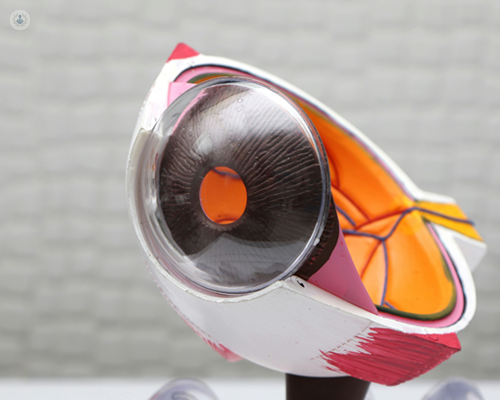What's involved in adult squint surgery?
Escrito por:Understanding what’s involved in adult squint surgery can help patients make informed decisions about their treatment options. Learn more in this informative article.
What is adult squint surgery?
Adult squint surgery, also known as strabismus surgery, is a procedure designed to correct the misalignment of the eyes. This condition, called a squint or strabismus, occurs when the eyes do not point in the same direction. It can affect one or both eyes and can be present from childhood or develop later due to various factors such as medical conditions, trauma or age-related changes. The surgery aims to improve the alignment of the eyes, enhancing both their cosmetic appearance and functional performance.

Why might an adult need squint surgery?
There are several reasons why an adult might need squint surgery. While improving the cosmetic appearance is a common reason, many adults seek this surgery to address functional problems. Misaligned eyes can lead to issues such as double vision, eye strain and headaches. In some cases, the squint may worsen over time, making surgical intervention necessary to prevent further complications and improve the quality of life.
How is the surgery performed?
Squint surgery involves adjusting the eye muscles to correct their positioning and improve alignment. The procedure is usually performed under general anaesthesia, although local anaesthesia with sedation can be an option in certain cases. During the surgery, the ophthalmologist makes small incisions in the conjunctiva, the thin tissue covering the white of the eye, to access the eye muscles. Depending on the specific needs, the muscles may be:
- Shortened (resected)
- Lengthened (recessed)
- Repositioned
The surgery typically lasts between 30 minutes to an hour, depending on the complexity of the case. It is generally done on an outpatient basis, allowing patients to go home the same day.
What should one expect during recovery?
Recovery from squint surgery is usually swift, with most patients resuming normal activities within a few days. However, it may take several weeks for the eyes to heal fully and for the final results to be visible. In the initial recovery period, patients might experience redness, swelling, and mild discomfort in the eyes. These symptoms can usually be managed with over-the-counter pain relief and prescribed eye drops.
Follow-up appointments are crucial to monitor the healing process and ensure proper eye alignment. In some cases, additional treatments, such as eye exercises or further surgery, may be required to achieve optimal results.
What are the risks and benefits of squint surgery?
Like any surgical procedure, squint surgery comes with potential risks. These include:
- Infection
- Bleeding
- Scarring
- Overcorrection or under correction, which might necessitate further treatment
- Temporary double vision during the adjustment period
Despite these risks, the benefits of squint surgery are significant. Successful surgery can improve both the appearance and function of the eyes, leading to reduced eye strain and increased confidence in social and professional settings.
How should you prepare for squint surgery?
Preparation for squint surgery involves a thorough eye examination and consultation with an ophthalmologist. The specialist will evaluate the type and severity of the squint, discuss expected outcomes, and explain the surgical procedure in detail. Patients may need to:
- Stop taking certain medications before the surgery
- Arrange for someone to drive them home after the procedure
If you have concerns or questions about the procedure, consulting with a specialist is essential to receive personalised advice and guidance tailored to your specific needs.


